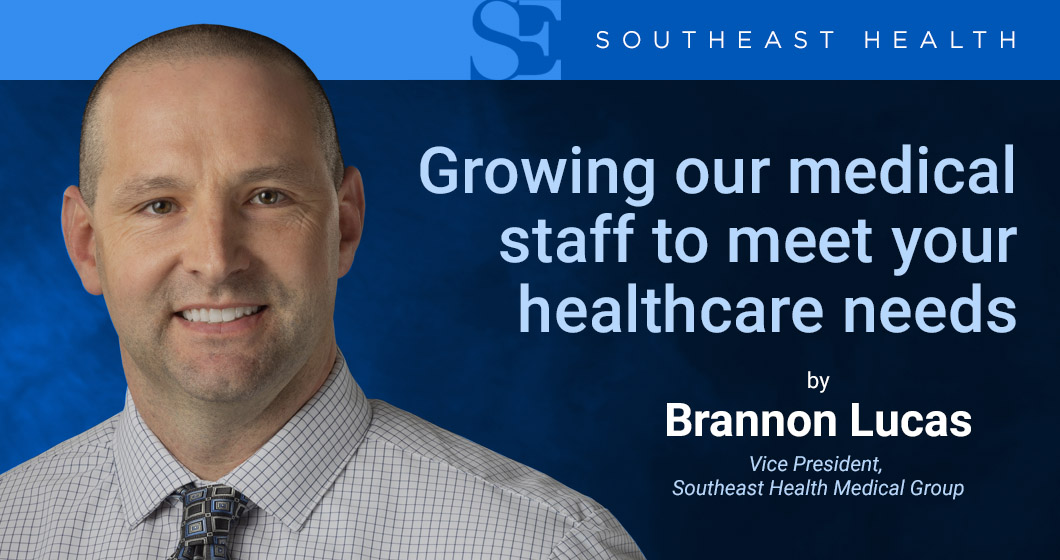
By Brannon Lucas, vice president of the Southeast Health Medical Group
The Association of American Medical Colleges recently issued an alarming projection: the United States will face a severe shortage of up to 86,000 physicians by 2036.
The shortage is traced to a number of key factors, including a large portion of the physician workforce approaching retirement age, an aging population who needs more health care, and burnout of medical providers because of heavy workloads and an ever-growing administrative burden.
We are working to meet those challenges by recruiting new medical staff to independent groups, but also through the Southeast Health Medical Group, which offers an alternative to private practice. We see that almost 70 percent of physicians in their final year of residency training prefer hospital employment because it addresses the complexity and burden of administrative and business practices, like regulatory requirements, billing structures and declining reimbursement. If employment is not an option, most new physicians will not even consider your opportunity.
By recruiting more physicians and advanced practice providers with this model, we’re expanding our medical staff, giving patients better access to care, and meeting a greater diversity of health needs in our community. Patients are able to access primary care providers and see specialists more quickly.
From the physician’s standpoint, this model helps reduce burnout and enables a better work-life balance. The administrative burden of practicing medicine is a chief reason for physician burnout; a recent study showed that physicians are looking to bring joy and purpose back into the practice of medicine. Physicians would rather spend time with their patients than with paperwork. We believe this medical group model helps provide an opportunity to do that.
The Southeast Health Medical Group now has more than 250 providers, including physicians, advanced practice providers, and residents. We are recruiting several new providers every month. We also have been upgrading our clinics to create a better experience for patients and providers. For instance, co-locating specialists who work together in the same clinic creates a strong collegial work atmosphere and easier access for patients.
Through its relationship with the Alabama College of Osteopathic Medicine (ACOM), the Southeast Health Medical Group is recruiting graduates who have gone through residencies and fellowships and are entering the workforce as physicians. Many of the ACOM graduates who have completed residencies elsewhere say they are happy to be returning to this region and calling Dothan home. Many Internal Medicine residents in Southeast Health’s Graduate Medical Education program are also choosing to practice here after graduation. These physicians have joined private practices in the community, as well as the Southeast Health Medical Group.
We have recently welcomed new physicians specializing in cardiology, vascular surgery, interventional neurology, emergency medicine, and more. Our goal is to provide new physicians with a great support system and an atmosphere of strong collegial support.
This year our recruitment strategy includes adding providers in urology, endocrinology, neurology, infectious disease, primary care, hospital medicine, cardiothoracic surgery, and academic faculty to support teaching. We are growing to meet increasing demand and the needs of our community.
I’m a Dothan native. This is where my family and friends are, and I’m committed to supporting a great health system for our ever-widening patient population. We’re confident this strategy is helping us now and will carry us into the future.
We look forward to welcoming new physicians and supporting them as they join our growing medical community.
This is first in a series covering the impact of changes in healthcare in our region.

